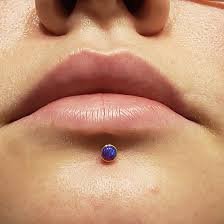Wainscoting A Timeless Elegance for Your Home Decor

Wainscoting is a classic design feature that can dramatically enhance the aesthetic of any room while providing practical benefits. This decorative wall treatment has a rich history and a variety of styles, making it a versatile choice for homeowners looking to add charm and character to their spaces. In this comprehensive guide, we will explore the history, types, materials, installation methods, maintenance, benefits, and creative applications of wainscoting ensuring you have all the information you need to make an informed decision.
The Rich History of Wainscoting
The origins of wainscoting date back to the 16th century in Europe, where it initially served a functional purpose. In homes that lacked modern insulation, wainscoting was used to protect walls from moisture and damage, particularly in areas prone to humidity. The term “wainscoting” comes from the word “wain,” referring to wooden wagons used to transport timber. High-quality wood was often selected for wainscoting, giving rooms a rich and inviting atmosphere.
By the 17th and 18th centuries, wainscoting evolved from a practical solution to a symbol of sophistication and status. Wealthy families showcased their affluence through intricately designed panels that highlighted the craftsmanship of skilled artisans. As architectural styles changed over the years, so too did the designs of wainscoting, leading to the diverse options available today.
Understanding the Different Types of Wainscoting
When considering wainscoting for your home, it is essential to understand the various styles available. Each type brings unique characteristics, allowing you to select the one that best fits your decor and personal style.
Board and Batten Wainscoting
Board and batten wainscoting features wide vertical boards with narrow strips, known as battens, covering the seams between them. This rustic style is perfect for farmhouse and cottage interiors, adding a cozy and inviting feel to any space. The texture created by the boards can make a room feel warmer and more intimate, making it a popular choice for living rooms and dining areas.
Raised Panel Wainscoting
Raised panel wainscoting is characterized by panels that are set into a frame, creating a three-dimensional look. This style is commonly found in traditional and formal settings, lending an air of sophistication and elegance to any room. Raised panel wainscoting can be painted or stained to match your decor, providing versatility and an opportunity for customization.
Flat Panel Wainscoting
Flat panel wainscoting consists of smooth, flat panels without raised elements. This minimalist design is ideal for modern and contemporary homes, offering a clean and sleek appearance. Flat panel wainscoting can complement various design styles while maintaining an understated elegance, making it suitable for hallways, dining rooms, and bedrooms.
Beadboard Wainscoting
Beadboard wainscoting features narrow, vertically arranged panels with a distinctive groove (bead) running along the edges. This style is often associated with coastal and cottage-themed homes, imparting a casual and relaxed vibe. Beadboard is also a practical choice for bathrooms and kitchens, as it is moisture-resistant and easy to clean.
Shiplap Wainscoting
Shiplap wainscoting consists of overlapping wooden boards, creating a rustic and textured appearance. This style has gained popularity in recent years, particularly in modern farmhouse designs. Shiplap can add warmth and character to any space, making it a favored choice among homeowners looking for a cozy, inviting atmosphere.
Selecting the Right Material for Wainscoting

The material you choose for your wainscoting plays a significant role in the overall look, durability, and maintenance of the installation. Here are some common materials used for wainscoting:
Wood
Wood is the most traditional and popular material for wainscoting. It offers timeless beauty and can be stained or painted to achieve the desired finish. However, wood is susceptible to moisture, so it is essential to choose the right type for areas prone to humidity, such as bathrooms or kitchens.
MDF (Medium-Density Fiberboard)
MDF is an increasingly popular choice for wainscoting due to its affordability and ease of installation. It is smooth, can be easily painted, and allows for a variety of finishes. MDF is also resistant to warping, making it a practical option for many homeowners, especially in humid environments.
Plywood
Plywood is a cost-effective alternative to solid wood for wainscoting. It is available in various thicknesses and can be finished in different styles. Plywood is durable and less prone to damage, making it suitable for busy households where durability is a priority.
PVC (Polyvinyl Chloride)
PVC wainscoting is a synthetic option that offers excellent resistance to moisture and stains. This makes it ideal for bathrooms and kitchens, where humidity and spills are common. PVC is lightweight, easy to clean, and requires minimal maintenance, making it a popular choice for homeowners seeking low-maintenance options.
The Installation Process for Wainscoting
Installing wainscoting can be a rewarding DIY project or a task for professionals. Here’s a step-by-step guide to help you navigate the installation process:
1. Measure the Walls
Begin by measuring the height and length of the walls where you plan to install wainscoting. Accurate measurements will help you determine how much material you will need and ensure a perfect fit. Use a level to mark the desired height for the top of the wainscoting.
2. Choose Your Design
Select the type of wainscoting that best fits your style and the existing decor of your home. Consider the color, finish, and overall design, as these elements will influence the look of your space.
3. Prepare the Walls
Ensure that the walls are clean and free of damage. Patch any holes or imperfections before proceeding. A smooth surface will help the wainscoting adhere better and result in a more polished appearance.
4. Cut the Panels
Using a miter saw, cut the wainscoting panels to the appropriate sizes based on your measurements. Precision is key, so take your time to ensure accurate cuts. It’s advisable to make all cuts before starting the installation to streamline the process.
5. Attach the Panels
Start from one end of the wall and work your way across. Use construction adhesive and finishing nails to secure the panels in place. Ensure they are level and properly aligned for a professional finish. You may need to use a spacer to maintain consistent gaps between panels.
6. Add Molding
Once the panels are installed, add a top rail and any decorative molding you desire. This step enhances the overall design and provides a polished finish to your wainscoting. Choose molding styles that complement the wainscoting type and the room’s decor.
7. Finishing Touches
Finally, paint or stain the wainscoting to achieve your desired look. Allow it to dry completely before adding any decor or furnishings to the space. Touch up any areas as needed to ensure a flawless finish.
Maintenance Tips for Wainscoting
To keep your wainscoting looking its best, regular maintenance is essential. Here are some tips to ensure its longevity:
Cleaning
Dust your wainscoting regularly to prevent dirt buildup. Use a soft cloth or duster to gently wipe down the surface. For more stubborn stains, a mild soap and water solution can be effective, but avoid harsh chemicals that may damage the finish.
Repairing Damage
If your wainscoting gets scratched or dented, address the damage promptly. For minor scratches, a touch-up pen can be a simple solution. More significant damage may require replacing a panel or repainting to restore the look. Keeping extra panels or paint on hand can help with quick repairs.
Repainting
Over time, your wainscoting may need a fresh coat of paint or stain. Choose a high-quality product that is appropriate for the material you’ve selected. Repainting can breathe new life into your wainscoting and enhance your space.
The Benefits of Wainscoting
Incorporating wainscoting into your home design offers numerous advantages. Here are some key benefits:
Aesthetic Appeal
Wainscoting adds visual interest and elegance to any space. It serves as a beautiful backdrop for your decor and enhances the overall design of your home, making it a sought-after feature for many homeowners.
Protection
One of the primary functions of wainscoting is to protect walls from damage, making it ideal for high-traffic areas like hallways and dining rooms. It acts as a barrier against scuffs, stains, and moisture, prolonging the life of your walls and reducing the need for repairs.
Increased Home Value
Quality wainscoting can enhance your home’s value, making it a worthwhile investment for homeowners considering resale. Potential buyers often appreciate the added charm and sophistication it brings to a property, contributing to a more favorable impression.
Versatility
Wainscoting can be used in a variety of styles and settings, allowing you to customize your space to reflect your personal taste. From traditional to modern, there’s a wainscoting style for every home. This versatility makes it an ideal choice for different rooms and decor themes.
Insulation
Historically, wainscoting provided insulation to homes. While modern homes are better insulated, adding wainscoting
can still provide some degree of thermal protection, helping to maintain comfortable indoor temperatures. This can lead to energy savings over time.
Creative Applications of Wainscoting in Different Spaces
Wainscoting can enhance the appearance and functionality of various rooms in your home. Here are some ideas for incorporating wainscoting into different spaces:
Living Rooms
In living rooms, wainscoting can create an elegant focal point. Pair it with a stylish color palette and comfortable furniture for a cohesive look. Raised panel or flat panel wainscoting can add sophistication without overwhelming the space. Consider accentuating the design with artwork or mirrors to draw attention to the wainscoting.
Dining Rooms
Add wainscoting to your dining room to create a formal atmosphere. Consider using rich wood tones or classic white wainscoting to elevate the overall dining experience. This design can complement your dining table and chairs beautifully, creating an inviting setting for family gatherings.
Bedrooms
In bedrooms, wainscoting can add warmth and coziness. Choose softer colors and textures to create a serene space. Beadboard wainscoting is particularly popular in children’s rooms, lending a playful touch. Use wainscoting behind headboards or as a decorative border to enhance the overall look.
Hallways
Hallways are often overlooked spaces, but wainscoting can add character and charm. Consider using a darker wainscoting to create contrast against lighter walls. This can make narrow hallways feel more spacious while adding visual interest.
Bathrooms
Wainscoting can be an excellent choice for bathrooms, especially beadboard or PVC options that resist moisture. This can enhance the overall aesthetic while providing durability in high-humidity areas. Use wainscoting to create a classic, spa-like atmosphere in your bathroom.
Home Offices
In home offices, wainscoting can add a touch of professionalism and sophistication. Consider using a flat panel or raised panel design to create a polished look. This can help make your workspace more inviting and conducive to productivity.
Cost Considerations for Wainscoting

The cost of installing wainscoting can vary widely depending on several factors, including:
Material Costs
Wood is typically more expensive than MDF or PVC. However, the durability and aesthetics of wood may justify the higher price for some homeowners. Consider your budget and the long-term value of the materials when making your choice.
Labor Costs
If you hire a professional for installation, labor costs can add significantly to your overall budget. If you are handy and choose to DIY, you can save money while enjoying a rewarding project. Be sure to factor in your time and the tools needed for a DIY approach.
Additional Features
Custom designs, intricate moldings, or unique paint finishes can increase costs. Be sure to factor these into your budget when planning your wainscoting project. Always get multiple quotes if hiring professionals to ensure you receive the best value.
Also read Indigo Color The Depth and Significance of a Timeless Hue
Conclusion
Wainscoting is a timeless design element that can elevate any room, adding beauty and functionality. Whether you opt for traditional wood, modern MDF, or moisture-resistant PVC, the right wainscoting can transform your home into a sophisticated oasis. With various styles, materials, and installation methods to choose from, wainscoting remains a popular choice for homeowners seeking to enhance their living spaces.
By understanding the different aspects of wainscoting, you can make informed decisions that will not only beautify your home but also add lasting value. Ultimately, the addition of wainscoting to your home can create a unique, inviting atmosphere that reflects your personal style while offering the practical benefits of protection and durability. Embrace the charm of wainscoting and let it enhance your living space for years to come.







